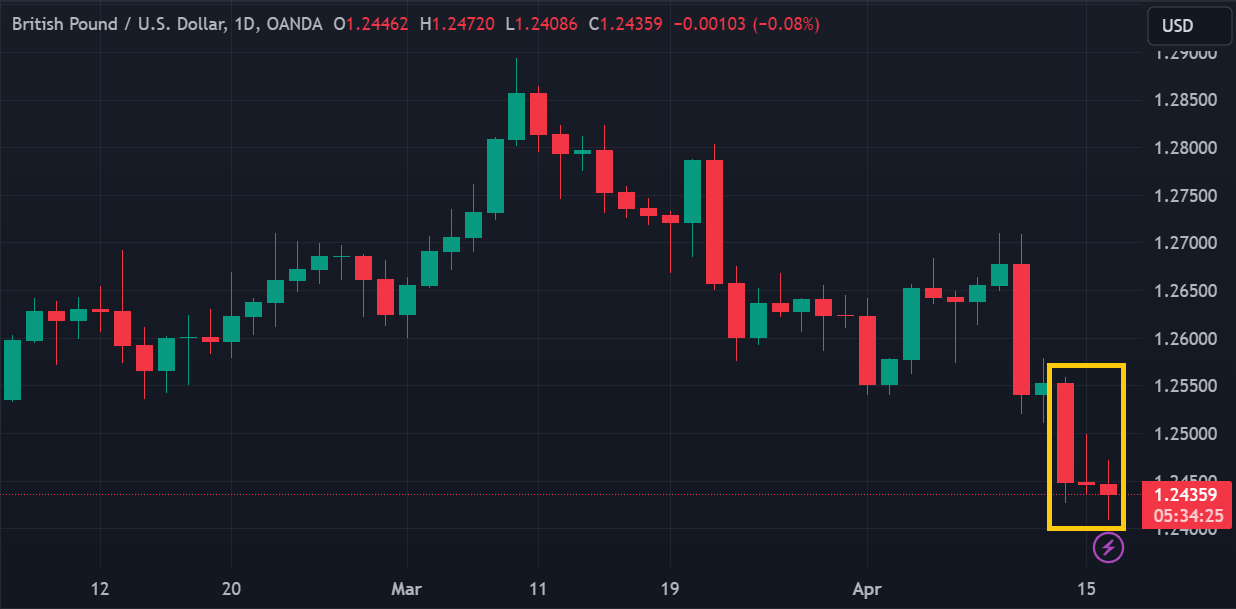The UK Unemployment Rate increased, prompting the Pound Sterling to fall ahead of tomorrow's UK inflation data release.
The Pound Sterling slumped to a five-month low against the US Dollar in European session trading on Tuesday (16/April). This is because UK labor data supported speculation of an earlier BOE rate cut than the Federal Reserve. The GBP/USD rate remained depressed below the 1.2450 threshold as we entered the New York session, although its slump has temporarily eased.

The UK labor survey produced some odd numbers last year, leading some to question the accuracy of the data. The UK Office for National Statistics (ONS) still overhauls the labor market survey. However, reporting of UK labor data has resumed.
Earlier this afternoon, the ONS reported that the UK saw its unemployment rate jump from 3.9% to 4.2% in February 2024 - much worse than the consensus estimate pegged at 4.0%. Regular wage growth without bonuses slowed from 6.1% (y/y) to 6.0% (y/y). Meanwhile, wage plus bonus growth stagnated at 5.6% (y/y).
Experts consider the figures to signal an easing in the UK labor market. Despite various doubts regarding the accuracy of the data, easing the labor market supports the prospect of a Bank of England rate cut this year.
"The labour market is clearly cooling. Wages take more time to react, but they're also slowing," said Kenneth Broux, head of corporate research, FX and Rates at Societe Generale.
"I think the drop in employment is good news for those at the Bank of England who are going to vote for rate cuts. And so in that context, again, relative to the Fed, it's not good news for the pound against the dollar," he added.
Current market data shows that the market expects the BOE to cut interest rates by 46 basis points by 2024. The majority believe the first cut will occur in August. Meanwhile, last week's surprise US inflation data triggered a pullback in the Fed's initial rate cut estimate from June to September.
Market participants will next monitor the release of UK inflation data on Wednesday. The market anticipates a weakening of annual inflation from 3.4% to 3.1% and core inflation from 4.5% to 4.1% in March 2024. The actual data could trigger volatility in various Pound Sterling pairs if it deviates too far from these forecasts.

 Dedicated FREE FOREX VPS
Dedicated FREE FOREX VPS Free FOREX Virtual Private Server
Free FOREX Virtual Private Server MT4 Demo Contest, Get $500
MT4 Demo Contest, Get $500 Sign Up for an Account, Claim 60% Deposit Bonus
Sign Up for an Account, Claim 60% Deposit Bonus Free MT4/MT5 VPS 2024
Free MT4/MT5 VPS 2024 Send E-mail and Get Free Merchandise
Send E-mail and Get Free Merchandise $1K Refer a Friend Bonus for Pepperstone Pro clients
$1K Refer a Friend Bonus for Pepperstone Pro clients Maximize Your Earnings with 100% Deposit bonus
Maximize Your Earnings with 100% Deposit bonus Trade to Win, $5,000 Monthly Demo Contest
Trade to Win, $5,000 Monthly Demo Contest Claim 30% + 15% Deposit Bonus from LiteFinance
Claim 30% + 15% Deposit Bonus from LiteFinance






